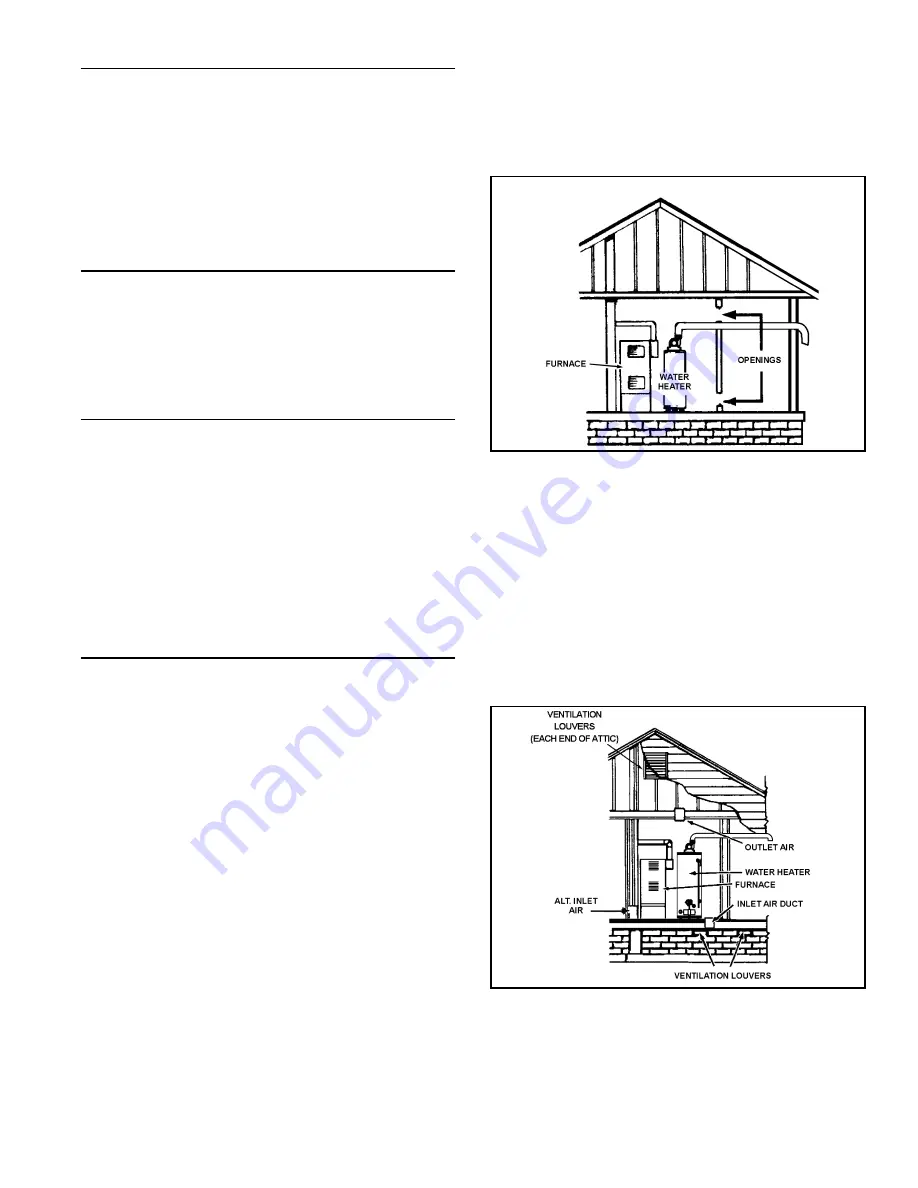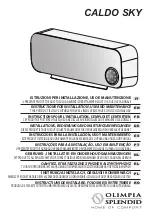
18
www. lochinvar .com
100221773_2000189439_Rev. 01
CONFINED SPACE
A Confined Space is one whose volume is less than 50
cubic feet per 1,000 Btu/hr of the total input rating of all
appliances installed in the space.
Openings must be installed to provide fresh air for
combustion, ventilation and dilution in confined spaces.
The required size for the openings is dependent on the
method used to provide fresh air to the confined space
and the total Btu/hr input rating of all appliances installed
in the space.
DIRECT VENT APPLIANCES
Other appliances installed in a Direct Vent configuration
that derive all air for combustion from the outdoor
atmosphere through sealed intake air piping are not
factored in the total appliance input Btu/hr calculations
used to determine the size of openings providing fresh
air into confined spaces.
EXHAUST FANS
Where exhaust fans are installed, additional air should be
provided to replace the exhausted air. When an exhaust
fan is installed in the same space with a water heater,
sufficient openings to provide fresh air must be provided
that accommodate the requirements for all appliances
in the room and the exhaust fan. Undersized openings
will cause air to be drawn into the room through the
water heater’s vent system causing poor combustion.
Sooting, serious damage to the water heater and the risk
of fire or explosion may result. It can also create a risk of
asphyxiation.
FRESH AIR OPENINGS FOR CONFINED SPACES
The following instructions should be used to calculate the
size, number and placement of openings providing fresh air
for combustion, ventilation and dilution in confined spaces.
The illustrations shown in this section of the manual are
a reference for the openings that provide fresh air into
confined spaces only. Do not refer to these illustrations
for the purpose of vent installation. See “Installation Of
Vent System” section for complete venting installation
instructions.
Chemical vapor corrosion of the flue, blower assembly and
vent system may occur if the air supply contains certain
chemical vapors. Spray can propellants, cleaning solvents,
refrigerator and air conditioner refrigerants, swimming pool
chemicals, calcium and sodium chloride (water softener
salt), waxes, bleach and process chemicals are typical
compounds which are potentially corrosive.
A. ALL AIR FROM INSIDE BUILDINGS: (See Figure 17)
The confined space shall be provided with two
permanent openings communicating directly with an
additional room(s) of sufficient volume so that the
combined volume of all spaces meets the criteria
for an unconfined space. The total input of all gas
utilization equipment installed in the combined space
shall be considered in making this determination.
Each opening shall have a minimum free area of
one square inch per 1,000 Btu/hr of the total input
rating of all gas utilization equipment in the confined
space, but not less than 100 square inches. One
opening shall commence within 12 in. of the top and
one commencing within 12 in. of the bottom of the
enclosures.
Figure 17.
B. ALL AIR FROM OUTDOORS: (See Figure 18 through
Figure 20)
The confined space shall be provided with two
permanent openings, one commencing within 12 in.
of the top and one commencing within 12 in. from
the bottom of the enclosure. The openings shall
communicate directly, or by ducts, with the outdoors
or spaces (crawl or attic) that freely communicate with
the outdoors.
1. When directly communicating with the outdoors,
each opening shall have a minimum free area of
1 square inch per 4,000 Btu/hr of total input rating
of all equipment in the enclosure (see Figure 18).
Figure 18.
2. When communicating with the outdoors through
vertical ducts, each opening shall have a minimum
free area of 1 square inch per 4,000 Btu/hr of total
input rating of all equipment in the enclosure (see
Figure 19).
















































